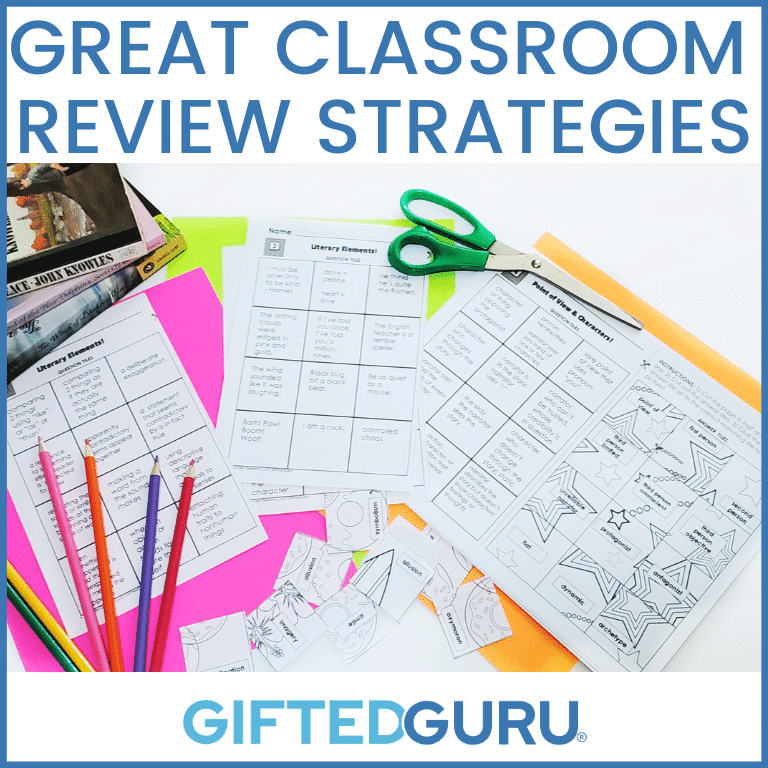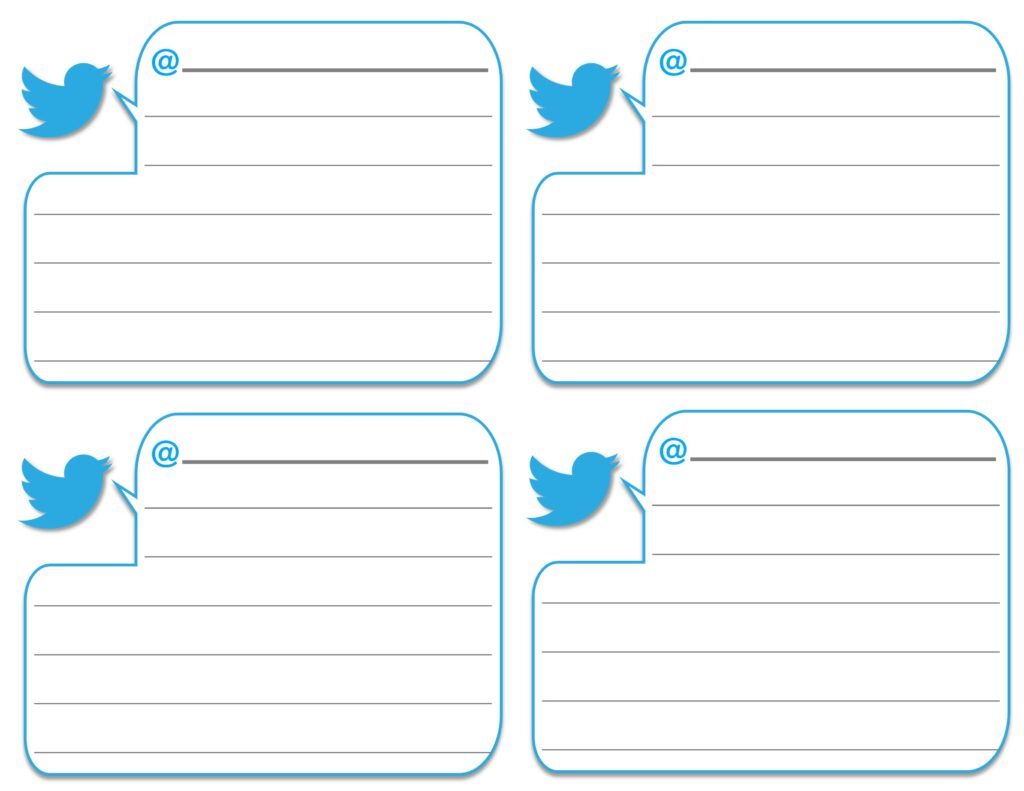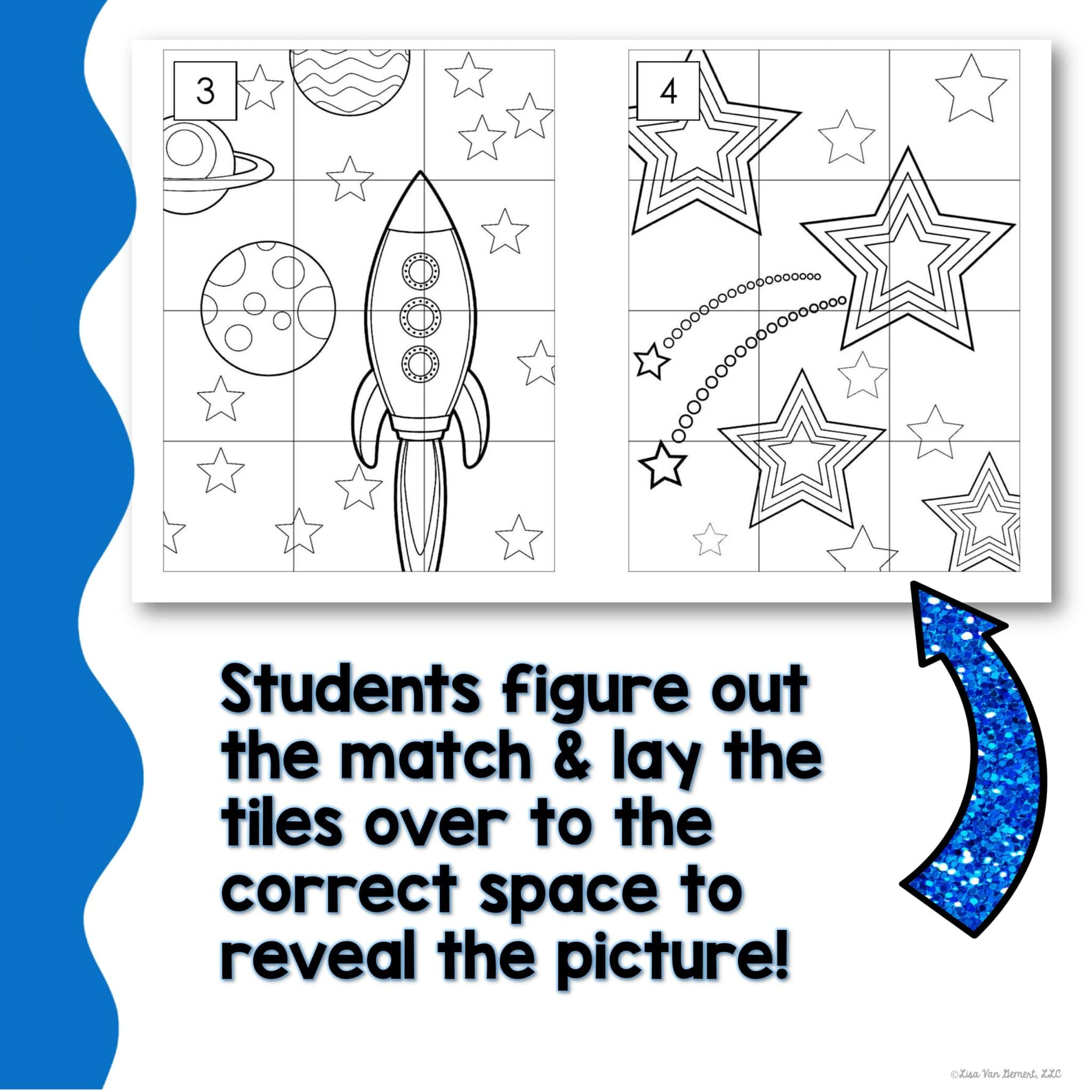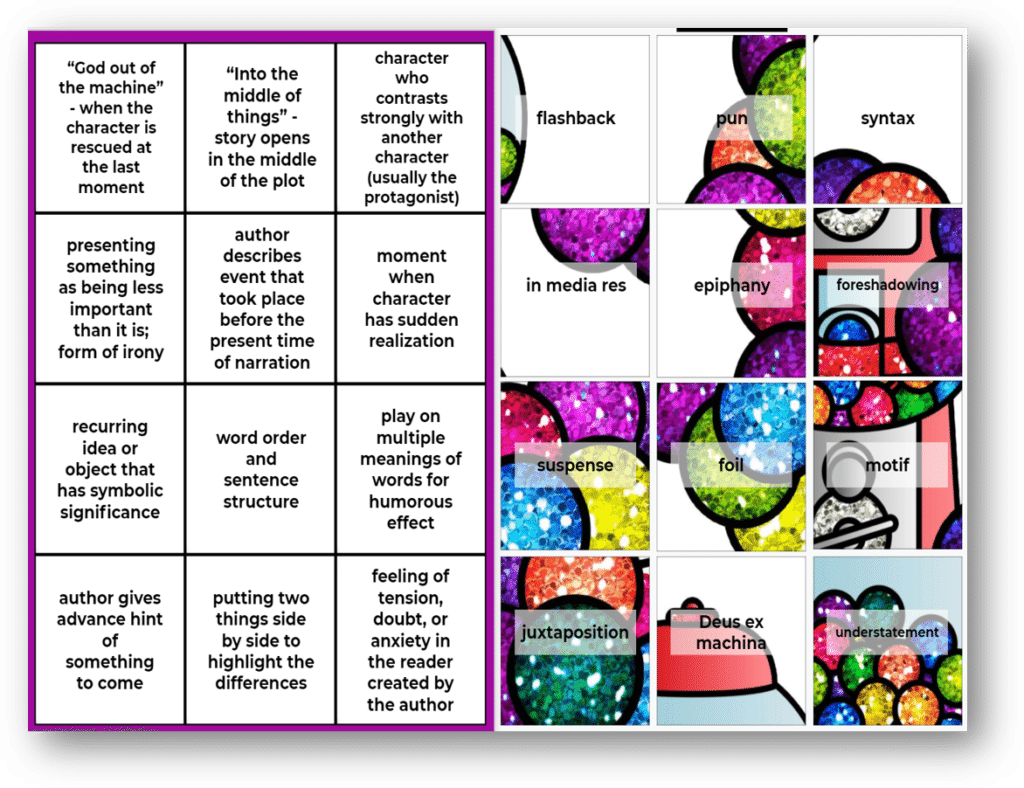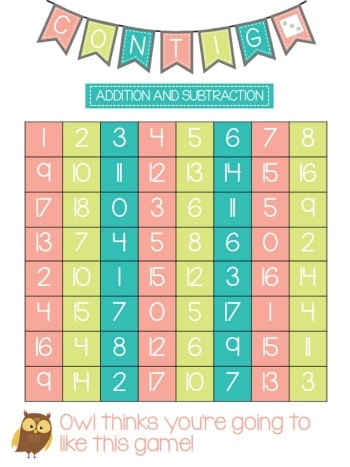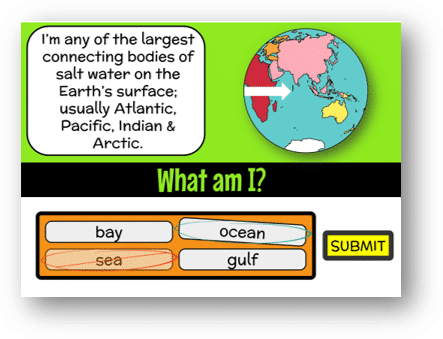I’ve got ten strategies I follow when to create quality review opportunities, even of boring stuff.
Let’s face it: sometimes there are things our students (or children) need to know that aren’t that exciting. We know that review is essential to deep learning, but how do we create quality review experiences for stuff that’s just not that exciting?
I remember reading the research about how the brain remembers things, and one of the criteria was it if it were something necessary for survival. (That’s why we could all give the airplane safety briefing ourselves.)
Great info, except how do I give parenthetical citation survival value?
“Kids, if you do this incorrectly, I’ll have a heart attack”? I don’t think that works.
Over the decades I’ve struggled with this, I’ve come up with some strategies that work well. Really well.
Here are the six strategies I use to make sure classroom review is effective.
1. Change it up
I know this sounds obvious, but I’m shocked at how many teachers use the exact same activity to review over and over and over again. It may be bingo or Jeopardy! or whatever, but it’s their default and it takes dynamite to blast them out of it.
When I wrote the Concept Capsules book about my vocabulary method, I put in pages and pages and pages of review activity suggestions because the brain thrives on new stuff.
You probably know I have a website just about teaching vocabulary, and on VocabularyLuau (that’s its name), there are loads of review activities I created for vocab that work for anything, so you can grab any of those you like. Because the ideas are for teaching academic vocabulary, lots of content areas are covered.
(One suggestion: The idea for using Twitter works for almost anything, and it’s got great printable and digital materials you can use – all free.)
If you’re using the same type of activity again and again, add some new ideas to your repertoire.
2. Puzzle it out
Ian Byrd and I have trained loads of teachers on the benefits of using curiosity based on some excellent studies that have been done on it.
One way to use curiosity in review is to use puzzles.
One example I use myself are secret picture puzzle tiles. The student matches correct answers and reveals a picture as they do. They can do this by physically cutting and pasting, or it can be done digitally in Google Slides.
With the digital version, they just drag the picture from the right over to the matching answer on the left, like you see below:
I like these secret picture puzzle tiles because I can make them using themes that go with holidays or seasons or whatever, so the same activity feels fresh, even when it’s done multiple times.
You can make your own, or you can check out the ones I’ve made over at TpT.
This is just one example of how puzzles can help with review. I’m a huge fan!
3. Games, games, games
I mentioned bingo and Jeopardy! earlier, and the reason so many teachers use them is that games work. Humans love to play.
The trick is to vary the games. There’s more dopamine when there is an element of surprise or newness to an experience, so have loads of games.
You can take almost any game and modify it for classroom use.
That’s what I did with Heads Up. I saw the game and thought, “Oh, I could use that.” And then I figured out how to make it work in class.

You can read the instructions for playing the Heads Up game, if you are interested.
I use a game called CONTIG to get kids to review basic math operations. I love this one because it self-differentiates. If your skills are stronger, you can use them.
Because it’s a game, it doesn’t feel like review or work. It’s the pedagogical equivalent of putting veggies in meatloaf.
You can make your own, or you can grab the one I made (including a digital version) on TpT.
It doesn’t matter which games you play. The point is to have a variety of them. So think of games you like and consider if they’ll work as a review activity.
4. Same thing, different ways
Remember, remember that the brain loves variety.
Because of this, it’s important to be able to review the exact same thing different ways.
I teach landforms (lots and lots of landforms), and I need to review them over and over.
I use a Google Slides game I made for one review experience.
It’s a super fun game that the kids love (especially because they love bugs). But as good as it is, it’s not enough to use the same game over and over. So, I use a Boom Cards deck to review the same thing later.
Another way I use this concept (same thing, different ways) is that if I have something they absolutely love (like Boom Cards), I’ll make some that look a little different or that are for a different concept. No matter how much they like them, I don’t have them play the same thing over and over.
For instance, you saw above how I use them for landforms. Well, kids loved that (I mean, LOVED IT), so I made a deck for map skills.

You can make your own Boom Cards, or, if you teach landforms or map skills, I’ve made awesome decks you can get.
With review, newness = success.
5. Plan your review experiences.
Plan your review activities with the same care you plan your core lesson material. Don’t leave it to chance, or you’re always going to be defaulting, and there’s no excitement in that.
I spend about 15% of my planning time figuring out how I’m going to review something. That may sound crazy, but I know how important review is, and I know that if I don’t plan for it at the time I’m planning the lesson, I’ll end up just taking the path of least review resistance.
I use a Google Sheet to plan it out.
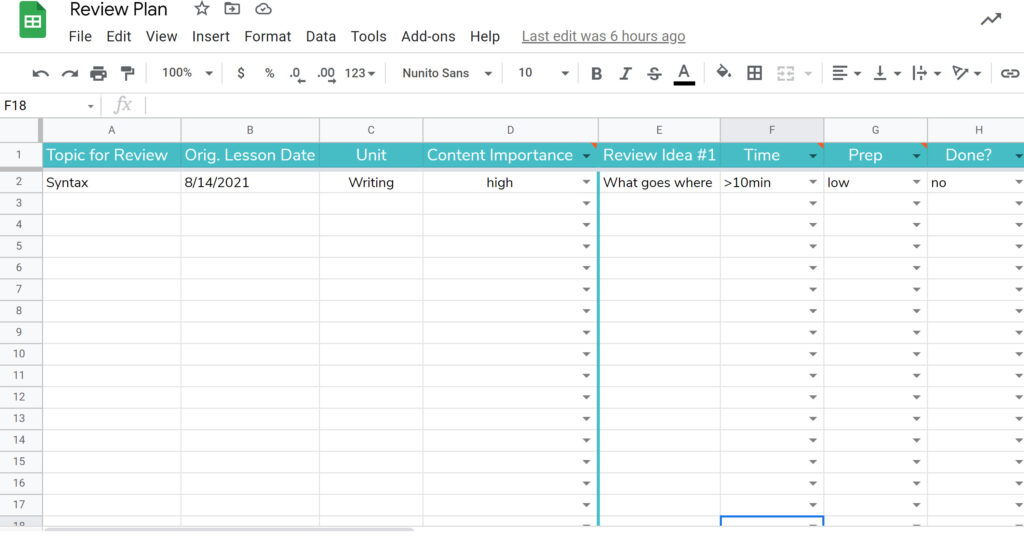
I’ve got this down to a science. This is what it includes:
- What I’m reviewing (the lesson)
- The day I originally taught it
- What unit it’s in
- How important the content is (I only have high or medium – I don’t spend time reviewing low importance material.)
- Then, I have space for four different review activity ideas. Each of those sections has:
- The name of the review activity
- How long it takes
- How much prep it takes
- If I’ve done it or not
Where you see the arrow in the cell, that means it’s a drop down menu. Here’s what it looks like in action:

If you click the button below, you can copy it into your own Google Drive and make any changes you want.
6. Keep Up Your Own Energy!
All of the great activities and games in the world will not keep student interest if you don’t have any intellectual or emotional energy in it yourself. Students will feed off the teacher’s energy about content, and that’s true in review.
I mentioned survival value at the beginning of this article, but survival value can be emotional survival.
Review can be as simple as asking questions or discussion. That will be effective if it’s not always that *and* if you have emotional energy to share.
Pump yourself up for it. Think of how it will feel to have all of your students be successful in what you’re planning for them.
Imagine a boxer in the corner of the ring getting ready for the round to begin, bouncing up and down on tiptoe. Imagine
Michael Phelps bopping in and out of the pool in anticipation of a race’s beginning. Gather that starting energy for yourself. If it takes Starbucks, okay. 😉
Sometimes the reason cool review games and activities are effective is because we feel energized when we know we have something our students are going to love.
You know that feeling, right? Coming into class knowing, “Oh, they’re going to love this so much!” We’re telling all our friends, we’re thinking about how we want to share it on Pinterest, and we’re hoping some administrator does a walk-through because it’s just that cool.
Of all of the tips I’ve shared, this is the most important. Without it, the others won’t work as well as they could.
With these tips in mind, there’s no such thing as boring review! No matter how basic, how repetitive the content, quality review will have your students clamoring for more.

